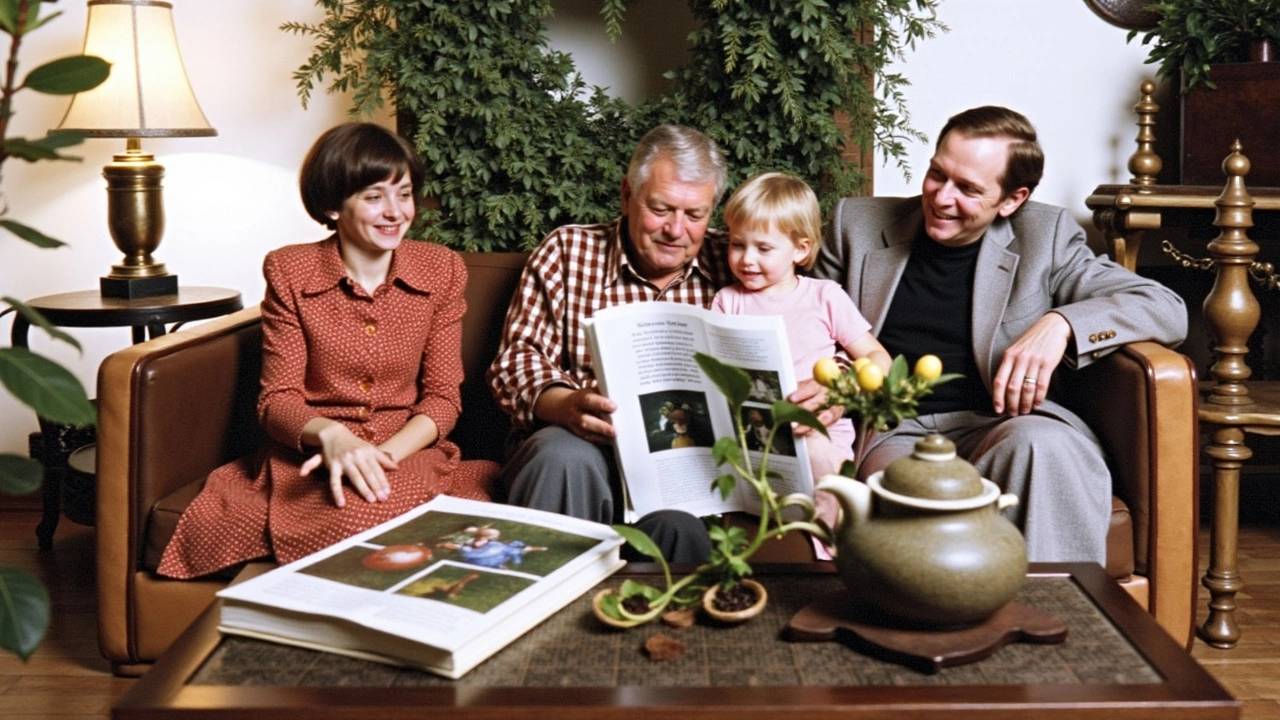President Jimmy Carter's Unforgettable Sleepover in Portland
On a spring evening in May 1978, the Olson family home in Portland, Oregon, transformed from a quiet suburban residence into a significant presidential accommodation. This was no ordinary evening; it was historic. President Jimmy Carter’s stay at Janet and Paul Olson's home was part of his commitment to connect with the American public on a personal and relatable level. It wasn’t just a pit stop; it was a remarkable moment that left an indelible mark on the family and the community.
The Olsons were likely chosen due to their active involvement in the Portland mayor’s campaign, a detail that did not go unnoticed by the mayor’s office. This connection led to the unique opportunity of hosting the President. As soon as the news spread, the neighborhood buzzed with curiosity and excitement. The prospect of such a high-profile guest brought celebrities, local politicians, and even nuclear protesters into the fold, making the Olson home the epicenter of attention.
Setting the Scene: May 4, 1978
It was May 4, 1978, when the President’s motorcade arrived in the neighborhood. The usual suburban calm was replaced by the energetic hum of Secret Service agents, onlookers, and media. Carter’s visit was part of a larger West Coast tour aimed at meeting local community leaders and staying true to his practice of engaging with the American people outside the confines of political formality. This practice of staying overnight with ordinary families wasn't new to Carter; he had adopted it during his gubernatorial campaign in Georgia. It allowed him to save money and, more importantly, to build genuine connections with his supporters.
Memories and Memorabilia
The Olsons have cherished memories and memorabilia from that night as vivid reminders of the historic event. Among their treasured keepsakes are the presidential telephone used by Carter, a coffee cup he drank from, and a framed photograph capturing Carter reading a bedtime story to their two children, Kristen and Ehren. These items remain poignant mementos of a time when America’s leader chose to step away from the grandeur of state affairs to relax in the warmth of a family home.
Nora Colie, an OPB producer and a childhood friend of Kristen Bergeron (née Olson), lived just two houses away. Through her account, we get a glimpse into the atmosphere and excitement surrounding Carter’s visit. To the children in the neighborhood, it was as if a celebrity had visited, but it was more profound than that. It was a moment when the nation's highest office felt accessible and human. For Kristen and Ehren, having the President of the United States read them a bedtime story was an unforgettable experience.
A Night of Relatability and Relaxation
That night, Carter was given a rare opportunity to unwind and experience a touch of normalcy. Away from the pressures of politics and media scrutiny, he relaxed with the Olson family, an experience that contrasted sharply with his usual engagements. Janet and Paul Olson described the evening as 'a very moving time.' They appreciated the chance to offer Carter a space where he could be himself and temporarily escape the political theater.
The unique initiative of Carter sleeping in ordinary homes began during his time as the governor of Georgia. It was more than a campaign strategy; it was an effort to genuinely connect with the people he served. This approach resonated with many, making him a relatable and approachable leader. Carter's night with the Olsons was testament to his commitment to understanding and appreciating the everyday lives of American citizens.
The Neighborhood's Brush with Fame
The Franklin High School area in Portland was suddenly thrust into the national spotlight. Residents found themselves neighbors to the President, even if just for a night. The visit significantly disrupted the daily routines but in the most exhilarating way. The mixture of joy, curiosity, and reverence was palpable as neighbors and sightseers gathered around for a chance to catch a glimpse of the President.
As night came, the Olson household became not just a home, but a symbol of Carter’s initiative to bridge the gap between ordinary citizens and their commander-in-chief. For a community to rally around such an event was a powerful demonstration of civic pride and collective memory.
Legacy of the Sleepover
Years after that memorable night, the Olsons still reflect fondly on their presidential guest. Their stories of Carter’s visit have been passed down through the generations, shared with friends, and recounted during family gatherings. The tangible memorabilia serves as a unique piece of history, bringing the past into the present and continuing to remind them of a time when their home was part of something much greater.
For many, Carter’s presidency is remembered for its emphasis on human rights and diplomacy. However, his practice of staying in ordinary American homes remains a cherished legacy of his efforts to stay grounded and maintain a genuine connection with the public.
A President Like No Other
Carter’s approach to leadership, exemplified by such personal engagements, underscored his belief in the power of inclusion and empathy. His stay at the Olson family’s home in Portland is just one of the many instances where he showed that even the highest office doesn’t remove one from the experiences and realities of everyday life. It’s a powerful reminder that at his core, Carter was a leader who valued human connection above all else.
In the end, the night President Jimmy Carter spent at the Olsons' home was more than a sleepover. It was a night where history was made in the heart of Portland, a night where a little piece of the Presidency came to the everyday lives of an ordinary American family. It was a reminder of what leadership can truly look like when it embraces empathy, relatability, and genuine human connection.







Comments
Hailey Parker
So Carter slept over like it was a slumber party with the president? 🤯 I mean, I’ve had guests who didn’t even wash their own dishes, but this guy brought his own phone and read bedtime stories? That’s not leadership-that’s *vibes*.
John Bartow
This story isn’t just about a man sleeping in a suburban home-it’s about the quiet revolution of humility in power. In an era where leaders are curated, filtered, and polished into digital avatars, Carter’s decision to enter a home unannounced, unadorned, and unafraid of peanut butter sandwiches on the kitchen counter was a radical act of democratic theater. He didn’t just visit; he *participated*. He didn’t just shake hands-he sat on the couch, he listened to the kids’ dreams, he let the dog lick his shoe. That’s the kind of presence that doesn’t make headlines, but makes history.
Mark L
OMG I can't believe he used their coffee cup 😭 I need to find my grandpa's old mug and pretend it was used by a president 🥹 #PresidentialPorcelain
Orlaith Ryan
This is everything! ❤️❤️❤️
Jacquelyn Barbero
I still have my grandma’s teacup from when JFK visited her cousin’s church potluck in '63. No one believed me until I showed the napkin with his signature. Moments like this? They’re the quiet glue holding the country together. 🫶
toby tinsley
There’s something profoundly dignified about a leader choosing to be ordinary. Not as a performance, but as a practice. Carter didn’t need the spotlight to validate his role-he found it in the quiet rhythm of a family’s evening. That’s not just humility. It’s integrity.
Chris Richardson
Honestly, this is the kind of stuff that makes you miss the old days. Not because everything was better, but because leaders didn’t treat people like voters-they treated them like neighbors. That photo of him reading to the kids? Pure gold. No filter, no PR team, just a dad in a suit reading Goodnight Moon.
Arvind Pal
Carter was the OG influencer bro 🤝 he didn’t need a million followers he just needed a bed and a kid who wanted a story
Mark Archuleta
This exemplifies the human capital model of civic engagement-where symbolic capital derived from embodied authenticity creates nonlinear social returns. Carter’s domestic immersion protocol disrupted the traditional top-down power architecture and recentered the citizen as co-stakeholder in governance. The memorabilia? That’s not nostalgia-it’s institutional memory in tangible form.
Pete Thompson
Let’s be real-he stayed there because he couldn’t afford a hotel. And the ‘bedtime story’? Probably just to get the kids to shut up so he could sleep. Don’t romanticize poverty disguised as virtue.
Richard Berry
wait so he used their toilet?? i need to know what brand it was 😅
Sandy Everett
That’s the thing about true leadership-it doesn’t shout. It shows up. It listens. It leaves a coffee cup behind and lets the quiet moments speak louder than any speech ever could.
J Mavrikos
I wish we had more leaders who’d just show up at your house, eat your mom’s casserole, and tell your little brother it’s okay to be scared of the dark. That’s the kind of president I’d vote for.